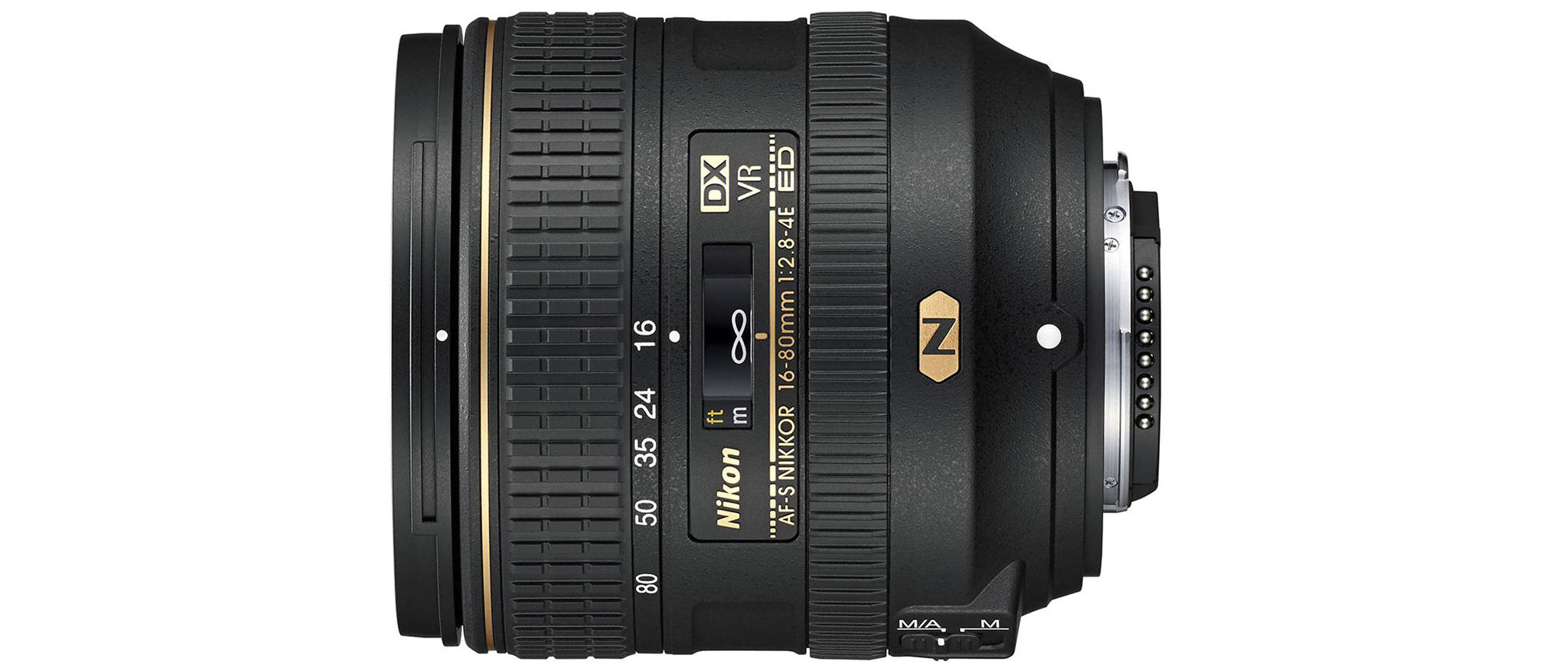Digital Camera World Verdict
Nikon makes some pretty spectacular DX (APS-C) format DSLRs, like the D7500 and D500. If you’re lucky enough to have one, it’s only natural that you’d want a high-performance standard zoom to match. The AF-S DX 16-80mm ticks almost all of the right boxes. It doesn’t have the constant f/2.8 aperture preferred by many but is still pretty fast, rated at f/2.8-4, complete with 4-stop VR (Vibration Reduction). It’s super-sharp and, while lateral chromatic aberration and distortion can be noticeable at the short end of the zoom range, these can be corrected in-camera. All in all, it’s the best standard zoom on the market for Nikon’s DX format DSLRs.
Pros
- +
Excellent sharpness
- +
4-stop VR
- +
Fairly compact and lightweight
Cons
- -
Not a constant-aperture zoom
- -
Quite pricey to buy
Why you can trust Digital Camera World
The Nikon AF-S DX 16-80mm f/2.8-4E ED VR replaces the obsolete AF-S DX 16-85mm f/3.5-5.6G IF-ED VR. The older lens was never the sharpest tool in the box but this newer, faster zoom is a much more up-market affair.
Specifications
Mount: Nikon F DX
Full frame: No
Image stabilization: Yes
Autofocus: Yes
Lens construction: 17 elements in 13 groups
Angle of view: 83-20 degrees
Diaphragm blades: 7
Minimum aperture: f/22-32
Minimum focusing distance: 0.35m
Maximum magnification ratio: 0.22x
Filter size: 72mm
Dimensions: 80x86mm
Weight: 480g
Key features
New meets old in this lens. It combines a highly effective yet conventional ring-type ultrasonic autofocus system with a new-generation electromagnetically controlled diaphragm. This helps to maintain consistently accurate exposures in rapid continuous drive mode, especially when using speedy bodies like the D500 and D7500.
The zoom range is an ‘effective’ 24-120mm in full-frame terms, which gives generous wide-angle coverage and telephoto reach respectively. High-spec glass includes four ED elements, along with Nano Crystal Coat for minimizing ghosting and flare. Like current kit lenses for DX format SLRs, it has a seven-blade diaphragm which is fairly well-rounded, and a 4-stop stabilizer. Unlike fully pro-grade standard zooms, however, it has a variable rather than constant aperture rating, shrinking to f/4 at longer focal lengths.
Performance
Levels of sharpness are exceptional at all but the longest zoom setting. However, lateral chromatic aberration can be quite visible when uncorrected at the short end of the zoom range, where barrel distortion and vignetting are also quite heavy. Even so, overall performance and handling are very impressive.
Lab results
We run a range of lab tests under controlled conditions, using the Imatest Master testing suite. Photos of test charts are taken across the range of apertures and zooms (where available), then analyzed for sharpness, distortion and chromatic aberrations.
We use Imatest SFR (spatial frequency response) charts and analysis software to plot lens resolution at the center of the image frame, corners and mid-point distances, across the range of aperture settings and, with zoom lenses, at four different focal lengths. The tests also measure distortion and color fringing (chromatic aberration).
Sharpness:
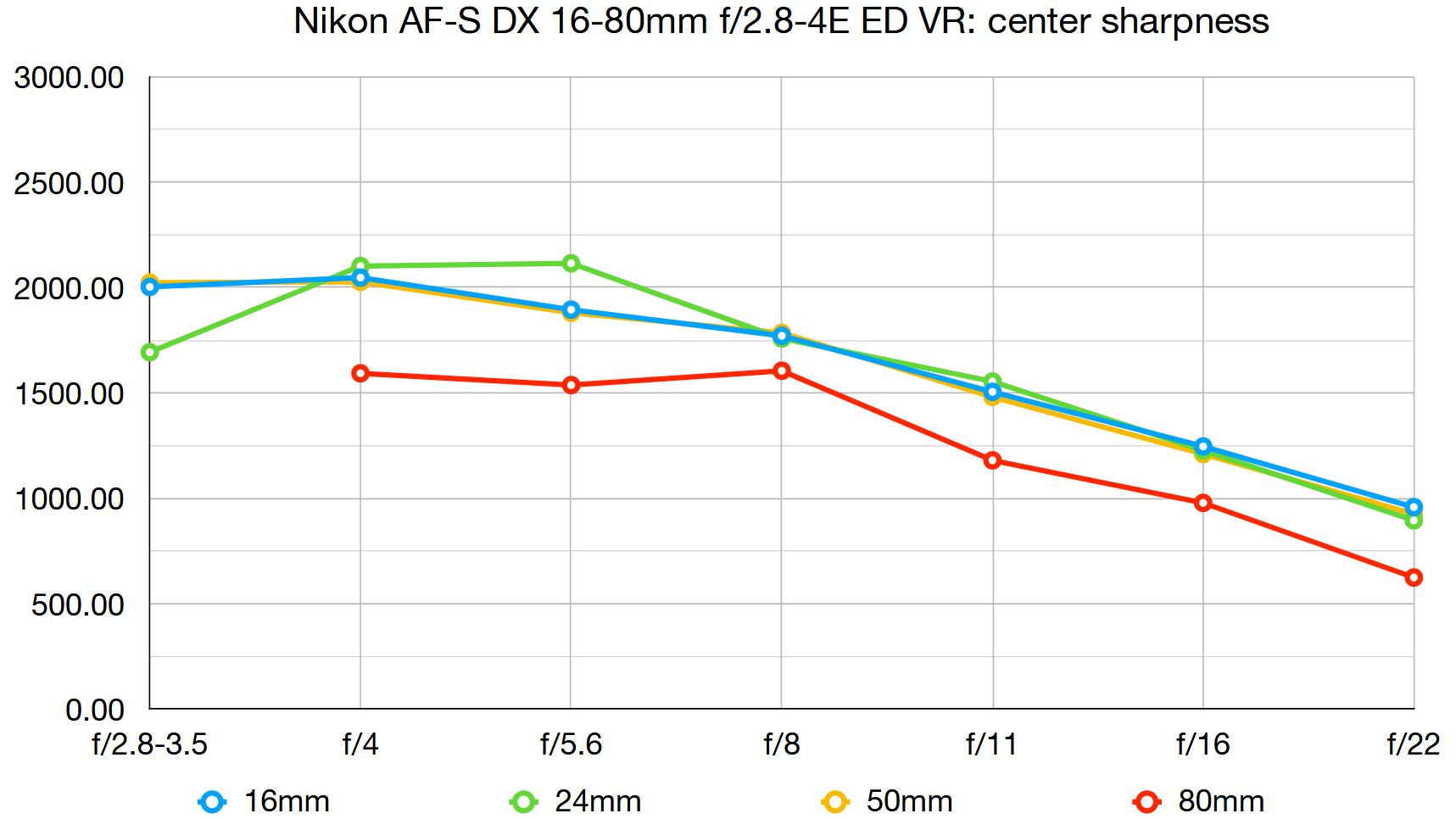
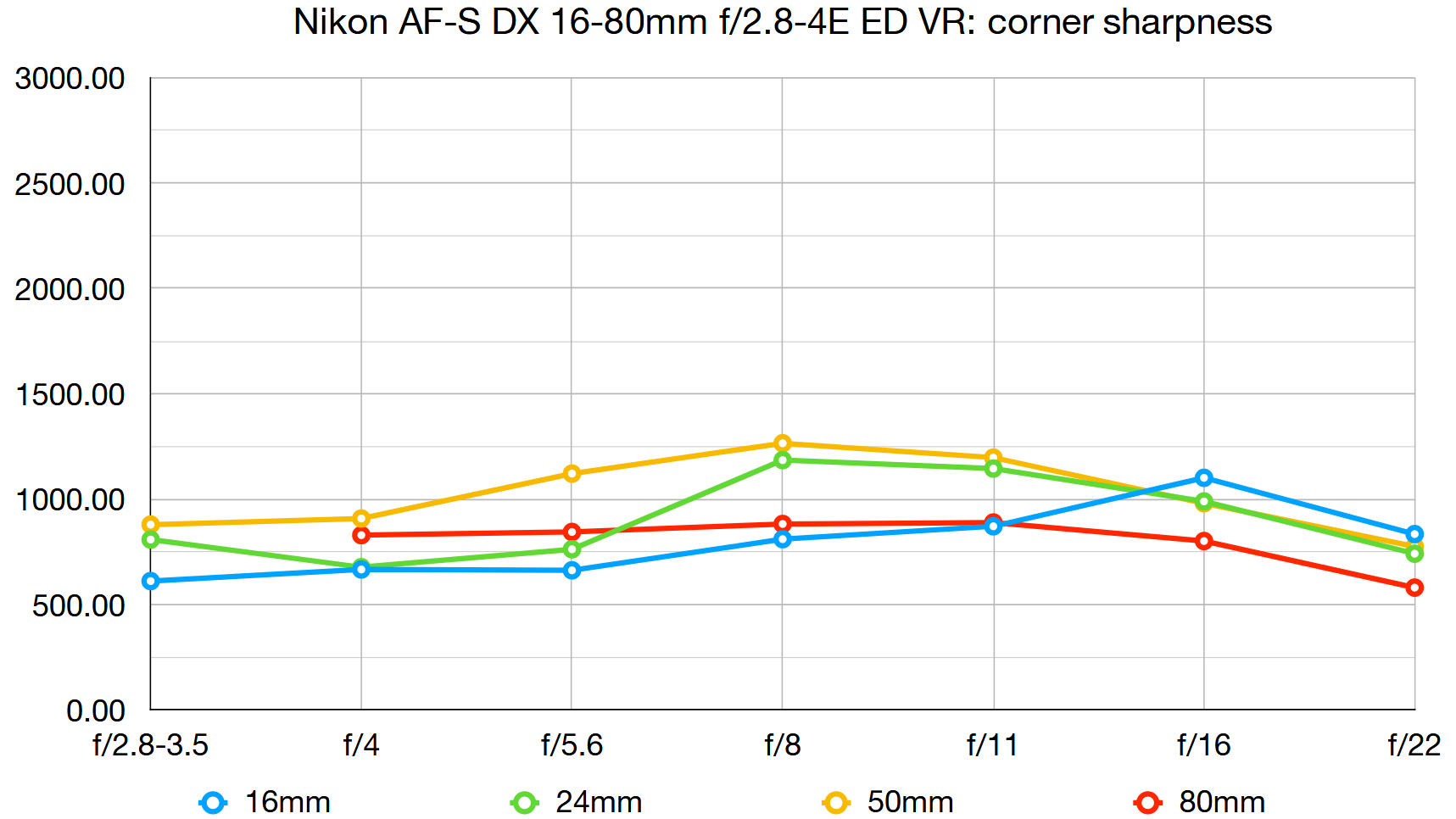
The lens is super-sharp at most zoom settings but drops off at the very longest focal length. Corner sharpness is also disappointing at shorter focal lengths.
Fringing:
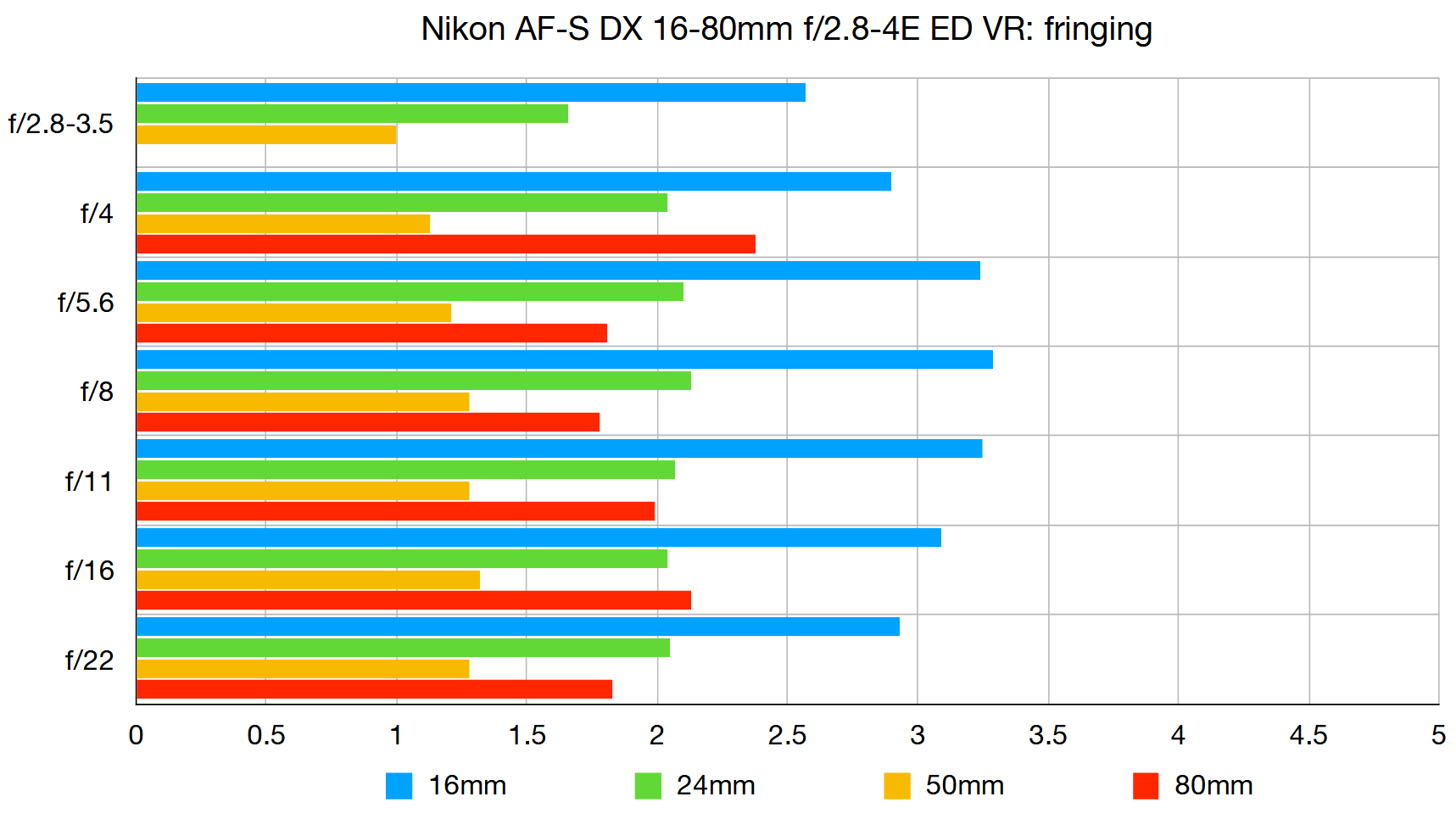
There’s noticeable fringing at 16mm but it’s corrected in-camera with Nikon bodies that aren’t entirely ancient, and it mostly dies away as you stretch through the zoom range.
Distortion:
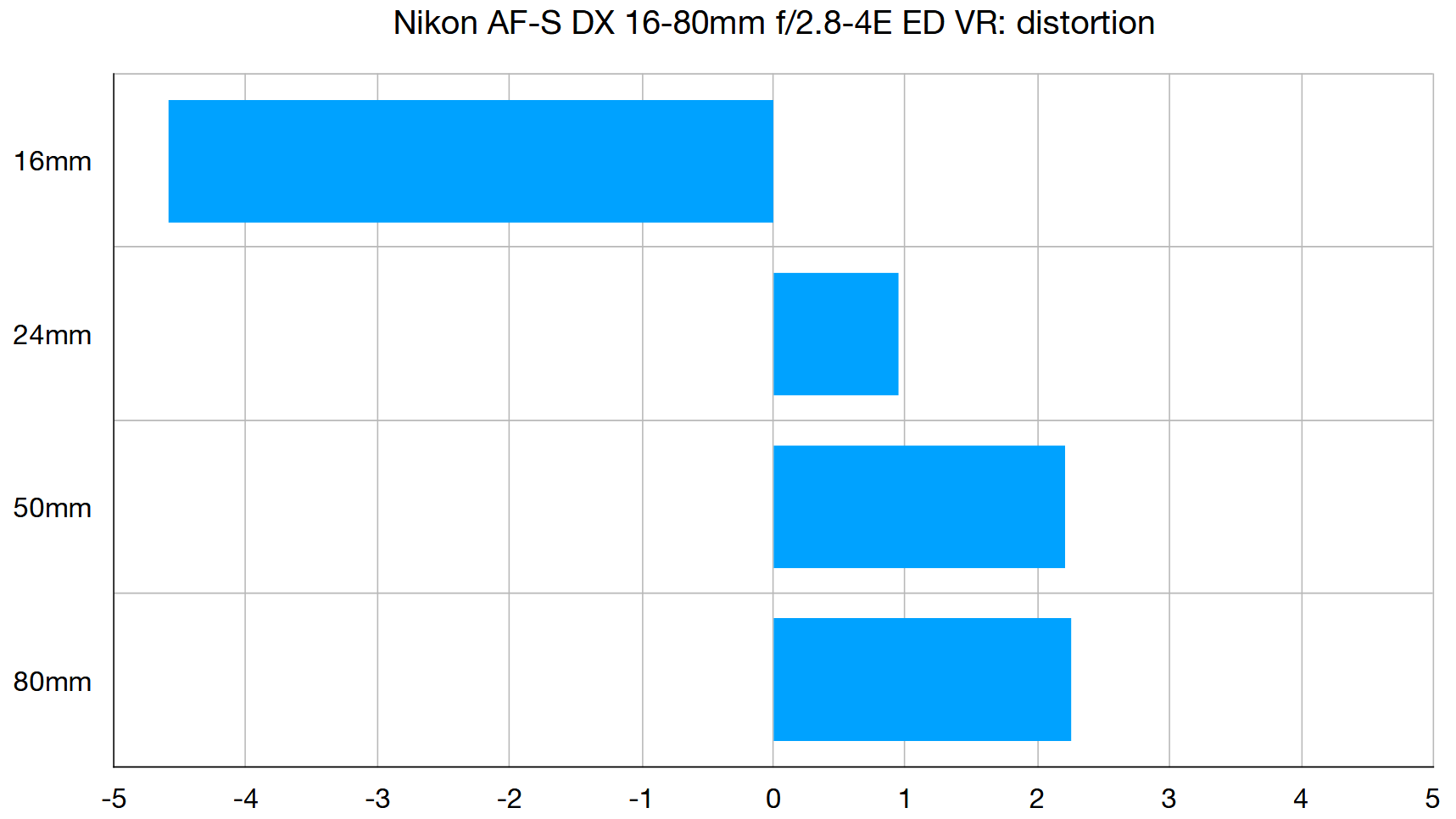
Barrel distortion is very noticeable at 16mm when uncorrected, while longer focal lengths show moderate pincushion distortion.
Verdict
If you’re after a high-performance standard zoom to make the most of a high-end Nikon DX format DSLR, the Nikon AF-S DX 16-80mm f/2.8-4E ED VR is the best lens on the market. It doesn’t have a constant-aperture design and is pretty pricey to buy, but you get what you pay for in terms of image quality and all-round performance.
Read more:
The best Nikon cameras
The best Nikon lenses
Best Nikon standard zooms
Best Nikon portrait lenses
The best Nikon telephoto lenses
The best lenses for bird photography
Matthew Richards is a photographer and journalist who has spent years using and reviewing all manner of photo gear. He is Digital Camera World's principal lens reviewer – and has tested more primes and zooms than most people have had hot dinners!
His expertise with equipment doesn’t end there, though. He is also an encyclopedia when it comes to all manner of cameras, camera holsters and bags, flashguns, tripods and heads, printers, papers and inks, and just about anything imaging-related.
In an earlier life he was a broadcast engineer at the BBC, as well as a former editor of PC Guide.
